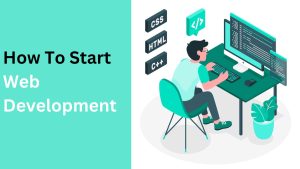Growth is a life aspect that pervades everything we do. Before a business or firm can be considered successful, it must constantly grow. Imagine a business where certain people aren’t in charge of growing and developing the business.
There is no agenda to grow or be informed of new business prospects, market trends, or developments. Not even the hearts of competitors are known, let alone how to reach target audiences.
You can agree with me that such a business is like a time bomb, and success is still far away. This and many more are the reasons why some people are assigned to business development practices, and they put in place some strategies for effective business development.
In this blog post, we’ll give you an overview of some good ways to build a strong base for your business. Read on for proven tips that can kickstart your journey towards business growth.
What is Business Development?
Business development is a term that includes all of the things that a business does to grow and expand. This includes making new products or services, going into new markets, finding new ways to make money, increasing sales, giving better customer service, using technology, and a lot more.
Finding these interconnected networks is an important part of growing a business since they will lead to new growth opportunities.
The goal of business development strategies is to find growth opportunities and figure out how to take advantage of them for long-term success. Businesses can grow, make money, and stay in business for as long as possible if they understand and use these strategies.
Business Development Versus Sales Strategies
It must not be mixed up with sales. Driving revenue or producing profits is the foundation of the sales process. Sales departments have only one common goal: to transfer goods while keeping a profit margin. On the other hand, business development professionals look for and develop new ways to work together that make money in indirect ways.
The company development process looks at the whole trip, while the sales function only looks at the end result.
Despite requiring some small sales abilities like bargaining, business development strategies are mostly marketing activities. Typical goals of business development strategies are to grow market sales, spread the word about the brand, get new customers, raise brand awareness, etc.
Selling goods or services directly to customers or clients is the role of sales. The goal of business development executives is to make sales to customers easier by working with partners or channels.
Alignment of the sales department alongside activities with marketing teams with clear business development initiatives have potential for customer retention identification of prospective customers.
Business Development Agents’ Responsibilities
Business development representatives, or BDRs, are individuals that work for your business development department.
BDRs work with almost all of your departments to find and implement new strategies, goals, customers, and methods for your business. BDRs must bring particular skills and attributes to the table because they interact with several people and require a wide range of skill sets.
It would be impossible to detail every activity that goes into business growth due to the broad range of duties. Following are the main duties your BD team will probably concentrate on:
Investigating Market Trends, Business History, Rivals, and Prospects
Business development agents help find out about market trends, the history of a business, competitors, and potential customers by researching the industry and gathering information about possible opportunities.
They use this information to find new markets, figure out what customers want, and come up with plans for how to get into these new markets. They also look at the products and services of your competitors to find gaps that your business can fill.
Investors Mapping
Business development agents help with investor mapping by finding possible investors who might want to invest in your business. They look at how stable these investors’ finances are and what they like to invest in to see if they are a good fit for your business.
They also make connections with possible investors to boost their chances of securing funding.
Recognizing Possibilities for Growth
Business development agents help a company find ways to grow by looking for new business opportunities. They look at market trends, customer needs, the strategies of competitors, and news about the industry to find possible growth areas.
Additionally, they stay up-to-date on emerging technologies and innovations that can be used to create new products or services that will meet customer demands.
Generating and Qualifying Leads
Business development agents help make leads and decide if they are good enough to follow up on by doing research on potential customers and judging how qualified they are.
They find target markets, figure out what customers want, and come up with ways to reach out to prospects. They also track the progress of leads throughout the sales funnel and follow up with them on a regular basis. In addition, they use data analysis to ensure those leads
Departmental Project Management
Business development agents help manage projects for their departments by working with other departments to make sure projects are finished on time and on budget.
They collaborate with marketing, sales, customer service, and other teams to set goals, develop strategies for meeting those goals, and monitor progress. Additionally, they provide feedback to the team about changes that need to be made.
Partnership Administration
Business development agents help in partnership administration by researching potential partners and negotiating deals. They find the companies they want to work with, evaluate how qualified they are, and make a list of criteria for choosing the best partner.
They also negotiate contracts and draft agreements that benefit both parties and protect them. Lastly, they monitor the performance of partnerships to make sure they are meeting expectations.
Data Evaluation
Business development agents help evaluate data by collecting and analyzing it to find trends, figure out how well the market is doing, and come up with plans for growth.
They look at feedback from customers, market research, financial records, and information about competitors to find ways to improve. Additionally, they leverage this information to develop plans for increasing efficiency and profitability.
Business Development Versus Tactics
The difference between business development strategy and tactics lies in their focus and intent. Strategy is a long-term plan that does not change quickly, while tactics are short-term solutions that can be tested and changed if necessary.
Networking, for example, can be used as either a strategy or a tactic depending on the desired outcome. Tactics should be used to support the overarching business development strategy.
Business Development Tactics
Below are some of the most effective business development tactics employed by high-growth companies.
- Regular evaluations and consultations within the firm
- The use of keywords and search engine optimization on websites
- Live presentations of goods and services
- Research practices and adoptions and publications
- Consistent feedback mechanism and prospect nurturing with phone calls
- Addressing specific conferences or events
- Collaborations in marketing with other companies
- Use of social media to network
Business Development Skills
Business development skills necessitate a wide range of technical abilities. For successful business development, a business developer or business owner must look for these skills within the company. These include:
Skill in managing projects: A business developer or business owner should hire project managers who can look at all the tasks and decide which ones are most important.
Research skills: Being able to find effective solutions through research and using the latest industry trends can help you make good plans.
Analytical skills: This includes the ability to analyze data, recognize patterns, anticipate needs, and make decisions and summing them for for qualified leads
Negotiation and relationship building: This elicits the ability to foster strong relationship with potential clients, communicate effectively and negotiate for the best deals
A 10-Step Process for Business Development Strategy
The implementation of a strategy starts with a series of business development activities. But what are these business development activities, and how do you come up with a plan that is unique to your business? Use the steps listed below to create your own:
Make a Good Elevator Pitch
A good elevator pitch for a business development strategy explains the company’s value proposition and its goals in a way that sounds appealing. It should be brief and convincing and leave the reader with a positive impression or a call to action.
Start by summarizing what your company does and how it stands out from others in the industry. Then provide examples of how your products or services have helped past customers. You can also talk about any honors or awards the business has won in the past few years.
Finally, explain what goals you are working towards and why those are important to achieve for success. This incluse mission and vision statements so as to give the audience an overview of your strategy and make them more interested in learning more about it.
List Your Smart Objectives
SMART objectives stand for specific, measurable, achievable, relevant, and time-bound. They are goals that enable you to define the success of your business development strategy. When setting these objectives, make sure they are specific enough so that everyone involved can understand them clearly.
It’s also important to make them measurable so you can track your progress, this can be done by adding measures such as definite numbers. As an illustration, the SMART goal of “raising top-line income by 25% in the next 12 months” may be created from the plan “get more sales.”
Objectives have to be achievable that is realistic, it must not be ambiguous or seem too arbitrary. For objective to be relevant, it has to relate or be in line with the overall strategy of your business
Lastly , objective has to be time-bound. This has to do with number of hours, days, weeks or years of which the objective is deemed achievable so that everyone is working towards an end goal.
For example, “In the next three quarters, I plan to increase the number of customer service workers from 10 to 15 in order to improve first-response times for client issues.”
Perform a SWOT Analysis
A SWOT analysis is a key part of building a business because it helps you figure out what your company’s strengths, weaknesses, opportunities, and threats are.
First, figure out what internal and external factors may affect your strategy by researching your industry, analyzing your competitors. By doing this, you can convert prospects into customers and shorten the sales cycle. For example, if you are looking to enter a new market, assess the potential customer base and any obstacles that could prevent a successful entry.
Once this research is done, list each factor in its respective category. Weaknesses can include things like an outdated technology infrastructure or not having enough money. Strengths can include things like a team with a lot of experience or money.
New customer segments or available resources could be opportunities, while political instability and more competition could be threats.
By looking at the current situation of your company through the lens of the SWOT analysis, you can decide which strategies should be used to make it successful.
Define Your Audience
Defining your audience is an important strategy for a business developer because it helps you figure out who to target and what message to send.
Research customer demographics, behaviors, and interests to gain insight into their needs and wishes. You can also divide customers into groups based on their age, gender, location, or other factors to learn more about what they like.
Once you understand who your audience is, craft a message that will resonate with them and keep them engaged. This could involve creating content that speaks to the challenges they face or providing valuable information that can help them make decisions.
Conduct Market Research
Market research is a key component of any business developer’s strategy as it provides the data needed for making decisions. First, determine what kind of questions you want to ask in order to get an accurate picture of the market. This could include questions about customer satisfaction, behavior, or opinions regarding specific products and services.
Also, questions regarding the customer profile if you already have a sales target can be included to create opportunities for growth.
Once you identify what you want to learn from your research, you can collect data by doing surveys, talking to customers, or analyzing the collected data. Review the results and figure out where your current strategy is lacking and needs to be fixed or addressed.
Over 80% of businesses that grow every year use surveys to find out how their customers feel. Here are some guidelines for designing a survey:
- Establish the survey’s objectives.
- Make sure your inquiries are fair.
- Send surveys using appropriate methods.
- Keep them succinct and direct.
State Your KPIs
Key performance indicators (KPIs) are metrics used by business developers to measure the success of a business development strategy. Set targets for each KPI according to what you want to achieve over a set period of time. Some common KPIs are:
- Prospects or Opportunities created
- Sent proposals
- Performed sales tasks
- Customer growth rate
- Closed deals
Plan a Budget
Planning a budget is an important part of any business development strategy. Find out how much money you can spend on marketing and other plan-related activities. Evaluate which methods are most effective for reaching your goals and allocate resources accordingly. Keep in mind that some strategies may cost more money up front, but they can pay off in the long run.
Be sure to include these elements in your business budget:
- Balance sheet
- Cash flow statement
- Income statement
Ensure Excellent Customer Service
Strong customer service is an important part of any plan to grow a business because it makes customers happier and more loyal. Make sure your team is trained in providing excellent customer service, whether it’s through email, phone calls, or in-person interactions.
Make sure to track metrics like response time and customer feedback to see how well your customer service is going. This will give you an indication of whether your team is doing a good job and provide insights for making improvements.
Incorporate a Sales Plan
Without a sales plan, a business development strategy is incomplete. Your sales strategy is outlined in a sales plan, which includes:
- Your organization’s aims
- A plan of action for achieving those objectives
- Roles and responsibilities in a team
- Monitoring and benchmarking of performance
Although this is focused on the sales team, it might offer your business development team valuable information.
Implement a Process for Review
Putting a business development strategy into action is just the first step on the way to success. To make sure your plan is working, you need to come up with a way to check in on progress regularly. This could involve looking at data related to customer feedback, sales performance, and market trends.
By looking at how things are going on a regular basis, you can find areas that need work and come up with ways to get back on track.
Tips to Successful Business Development
By developing and growing your business in a smart way, you can keep customers coming back, make more money, and build a strong brand. Here are some tips to help you make a good business development plan and make sure that your business will do well.
Make Sure Your BD Strategy Is in Line With the Plans of Each Department
Goals set by sales managers for their team are equally as significant as your own in terms of importance. SFA software and clear communication can help you make sure that your objectives don’t conflict.
Hold Typical Gatherings
Regular meetings between departments are important for successful business development strategies. These gatherings can help keep everyone on the same page by presiding over cross-departmental status sessions.
They also provide an opportunity for team members to suggest new ideas or improvements that could make the strategy more effective. Additionally, regular meetings allow
Streamline Communication
Use the proper software, such as lead generation software and sales force automation(SFA), to centralize communication and make data access simpler
Take Your Time
Remember that it’s a marathon, not a sprint, and don’t rush it. Long-term growth is what makes a business grow, so focus on trends instead of worrying about the fact that monthly numbers can change a lot.
Regularly Update the Strategy
Once you’ve put your business development plan into action, it’s important to keep it up-to-date as needed. Look at customer feedback and sales data to see if the market or customer needs have changed in a way that could mean you need to change your plan.
Conclusion
Business development strategies are critical for businesses of all sizes. Understanding and utilizing best practices can give your business a significant advantage in an increasingly competitive marketplace.
Your marketing efforts will be more likely to be successful if you make a plan that fits with your goals and budget, put it into action, and measure the results regularly. With careful planning, the right strategies, and regular adjustments, you can make sure that your business stands out from the competition.
FAQs on Strategies for Effective Business Development
A successful business development strategy can benefit your company in many ways. It can increase customer loyalty and expand your market share, create more profitability and revenue, help build relationships with partners, and create a competitive edge over other businesses.
The most important factor in creating a successful business development strategy is to establish and communicate clear goals. Without clearly stated goals, it can be difficult to measure the success of your plan. Make sure that all members of your team understand what success looks like and how it can be achieved.
If your business development strategy isn’t going according to plan, the first step is to assess why this is happening. Analyze customer feedback, market trends, and sales data to identify any gaps in the plan that need to be addressed. From there, you can make adjustments to the strategy to ensure it is successful.
Setting SMART goals, doing a SWOT analysis, figuring out who your audience is, doing market research, coming up with KPIs, making a budget, making sure you have great customer service, making a sales plan, putting in place a review process, and updating the strategy on a regular basis are all parts of a good business development strategy.












